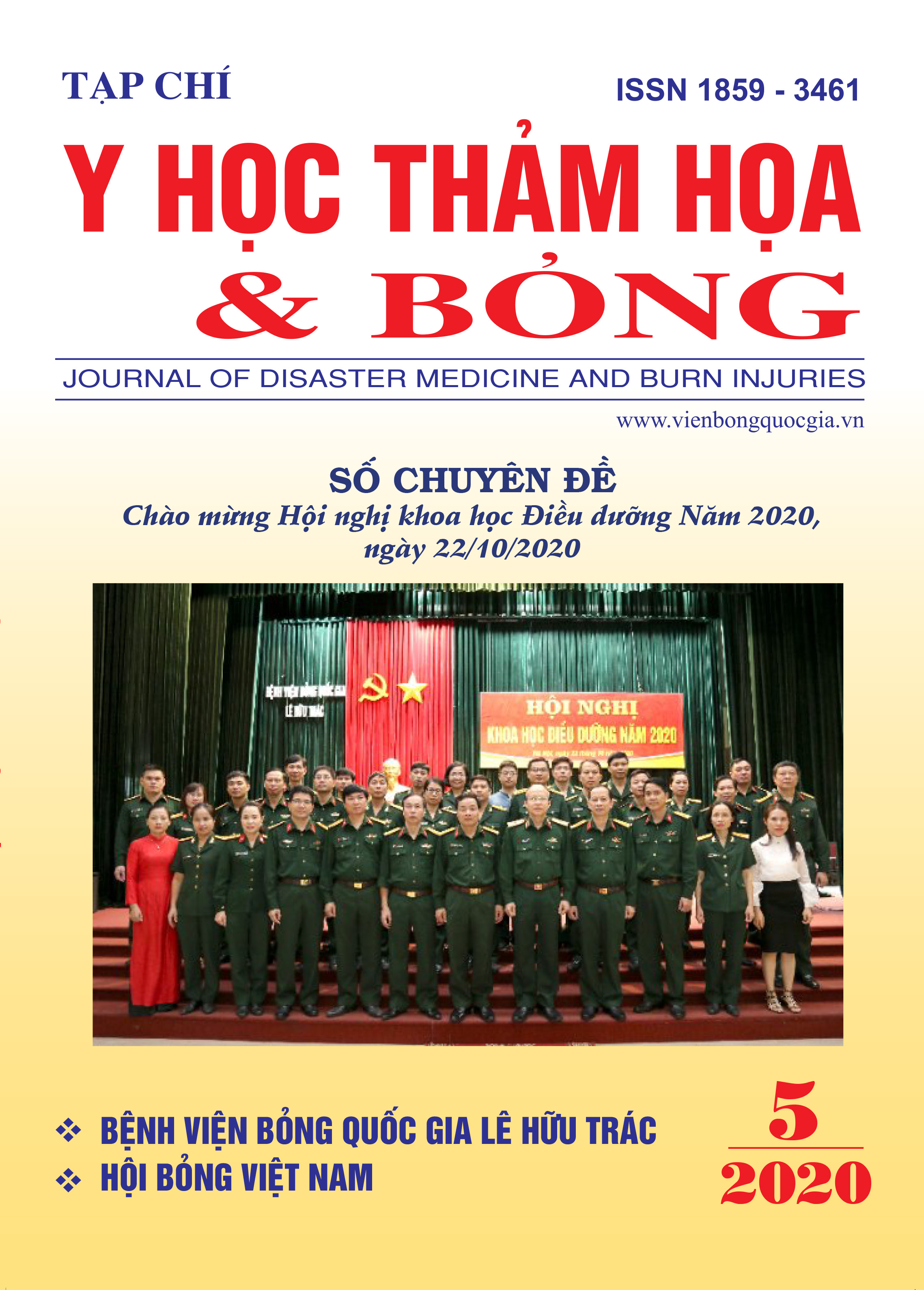Characteristics of urinary tract infections in patients with bladder catheterization at the Wound healing center, Le Huu Trac National Burn Hospital
Main Article Content
Abstract
catheterization. Identification of pathogens and antibiotic resistance of bacteria.
Subjects and methods: Retrospective and prospective cross-sectional descriptive studies on 21 patients with urinary catheterization diagnosed with catheter-associated urinary tract infections according to standards.
Results: In 21 patients, the incidence of urinary tract infections in male patients 13/21 (61.9%) was higher than in female patients 8/21 (38.1%). Duration of catheterization more than 07 days accounts for a high rate of 13/21 (61.9%). Spinal cord injury is the most common disease 11/21 (52.38%). The main clinical symptoms are fever > 380C and cloudy urine through catheter 17/21 (80.95%). Gram-negative bacteria accounted for 80.95% of which E. coli was most common with the rate of 11/21 (52.38%). The results of antibiogram showed that E. coli was mostly resistant to antibiotics, still susceptible to Imipenem, Meropenem, Amikacin, Ticar + clav.
Conclusion: The rate of catheterization urinary tract infections (CAUTI) among men was higher than women. The main clinical symptoms were fever > 380C and cloudy urine through a catheter. The main pathogen isolated was Gram-negative bacteria. The most common pathogens isolated were E. coli. E. coli bacteria which resistant to almost antibiotics.
Article Details
Keywords
Urinary tract infections, antibiotic resistance
References
2. Bộ Y tế, 2017, Hướng dẫn phòng ngừa nhiễm khuẩn tiết niệu liên quan đến đặt ống thông tiểu”.
3. Nicolle LE, Gupta K, Bradley SF, et al. Clinical Practice Guideline for the Management of Asymptomatic Bacteriuria: 2019 Update by the Infectious Diseases Society of American. Clin Infect Dis. 2019;68(10):e83-e110. [PubMed] [Google Scholar].
4. Lê Thị Bình và cộng sự. Thực trạng nhiễm khuẩn tiết niệu mắc phải sau đặt ống thông tiểu. Tạp chí Y học thực hành, 2004. Số 02 năm 2004: p.15.
5. https://www.semanticscholar.org/paper/Microbiological-Evaluation-of-Catheter-Associated-a-Bagchi-Jaitly/d34e4031211454e1328639a9751607b2e0e2dda2?p2df
6. https://www.sciencedirect.com/science/article/abs/pii/S2173578615000116
7. Huỳnh Minh Tuấn và cộng sự, Đặc điểm các trường hợp nhiễn khuẩn niệu liên quan ống thông tiểu tại Bệnh viện Đại học Y Dược Thành phố Hồ Chí Minh 2017.
8. Đinh Vạn Trung, 2017, Tỷ lệ phân bố vi khuẩn gây nhiễm khuẩn bệnh viện những tháng đầu năm 2017 tại Bệnh viện Trung ương Quân đội 108’’, tạp chí Y dược lâm sàng 108; 98-103.


